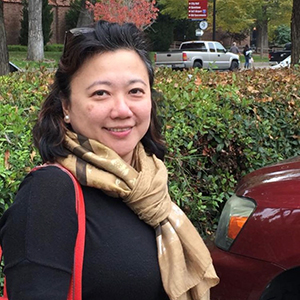A Kaiser Permanente memory clinic medical director explains the disease and measures for lowering the risk factors.
Alzheimer’s disease is a degenerative brain condition that causes problems with memory, thinking, and behavior. It is the most common form of dementia. According to the Alzheimer’s Association, more than 50 million people are living with the disease and other dementias worldwide today.

Maria Felicitas Dizon, MD, is chief of Geriatrics and of Skilled Nursing Medicine at Kaiser Permanente in the Central Valley, and medical director of the new Memory Care Clinic there. In honor of September’s Healthy Aging Month, Dr. Dizon explains the disease with a focus on prevention.
What causes Alzheimer’s?
There isn’t a single risk factor for Alzheimer’s disease. Two things are non-modifiable, meaning you can’t change them. One is age — the number one risk factor — and the other is genetics. Modifiable risk factors such as smoking, hypertension, diabetes, hypercholesterolemia, and obesity are what the medical community tends to focus on. Head trauma and education level are connected to dementia, too.
When does the disease typically present?
It can be diagnosed in people as early as 30, although that is very uncommon. Typically, people are diagnosed in their 60s. However, there are pathological changes happening in people’s brains as early as 15 years prior to the disease being noticeable.
What are symptoms of Alzheimer’s?
There are many symptoms of the disease traversing changes in cognition, behavior, mood, psychology, and physical abilities. The most common earmarks are short-term memory loss and confusion. Other early signs include repeating the same questions and misplacing things. As the disease progresses, there may be changes in personality and hygiene, followed by an inability to follow instructions, and then a general disorientation.
The changes initially are very subtle, so family members or the patients themselves may attribute it to normal aging. As a result, it is very under-diagnosed, yet with our aging American population gerontologists are seeing the demands for help and care growing dramatically.
Can anything be done to stave off the disease?
There are currently no known ways to cure Alzheimer’s. However, there are many studies on the disease as part of risk factor reduction strategy. One looked at hypertension as a risk factor and found that lowering blood pressure can reduce the risk of mild cognitive impairment, a precursor to Alzheimer’s.
I recommend overall physical and mental health measures to my patients. That includes the basics of healthy eating, with lots of fruits and vegetables as well as less red meat and saturated fats; regular exercise; adequate sleep; and, of course, no smoking.
But living well as a senior also extends to exercising one’s mind, such as taking in-person or online classes; doing puzzles, games, or other brain challenges; and being sure to socialize.
The main take-away here is to contact your primary care physician if there are any concerns about yourself or a loved one. Also, it is never too late to take care of your health to give yourself the best odds of a healthy, productive life.
Learn more about Alzheimer’s disease from Kaiser Permanente and the Alzheimer’s Association.





This Post Has 3 Comments
…The Buck Institute and especially Dr. Bredesen is saving lives and minds. Read his book, ‘The End of Alzheimers’ and see how it works.
Great to hear there is a Memory Center in the Central Valley! We in the Memory Center in the DSA look forward to more service areas opening up Memory Centers! We keep patients out of the ER and are able to manage patients with minimal anti-psychotics and no benzodiazepines. Multi-disciplinary teams make it possible…
Some doctors such as John McDougall, MD; Neal Barnard, MD; Michael Klaper, MD, etc. think that there is a link between Alzheimers and diet and that the plaques that cause dementia are linked to a diet high in saturated fats.